The world market, and with it the Russian economy, are in constant dynamic movement, both in the positive and negative sense of the term. This happens under the influence of many factors in different directions. One of them is a tireless destroyer of economic systems and social welfare of the population - inflation. Measuring inflation is becoming one of the most important activities of economists.
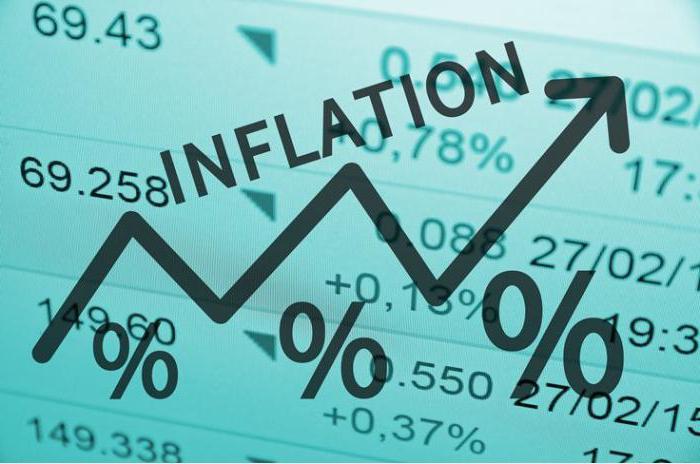
What is inflation?
Inflation is, simply put, the depreciation of money. The process is often of positive importance, helping the economy get out of a state of stagnation, but mainly inflation is always associated with a crisis and even the collapse of the national and world economies. The fall in the value of the monetary unit almost always leads to the collapse of the country's financial and industrial systems, and also forces scientists and politicians to pay attention to the measurement of inflation, because this indicator is an indicator of the success of the state’s economic policy.
Inflation takes on an open and hidden form. Over the past decades, our country has managed to go through both stages. During the years of stagnation and perestroika, hidden inflation was one of the leading reasons for the development of the terrible deficit in the country. Since the beginning of the nineties, when it was the turn of the development of a market economy, inflation became open. Money began to depreciate more and more every year, and the value of the fall in their value was not calculated in fractions of percent, but at the level of several percent or more.
At the moment, there is also an almost constant increase in prices. The situation in the Russian economy has slightly improved with the growth of commodity and cash turnover in the consumer market of domestic products, but other negative processes still block such minor improvements.
Monetary causes of inflation
The process of depreciation of the national currency can occur for a number of completely different reasons. Inflation, the types of measurement of which can take into account many factors, very much depends on the policy of the national bank and the activities of related structures. For example, in the case when there is a mismatch between financial capabilities and the quantity of goods (demand for products and services is higher than the volume of their supply), the volume of funds received by the producer is greater than its costs. The result is an unreasonable rise in price of goods.
The budget surplus may also be the culprit of inflation. This phenomenon entails some negative consequences, however paradoxical it may sound. Investments in the economy are too large, as a result of which the number of investments overlaps the own potential of the economy, and the increase in wages outstrips the growth of industry.

Structural Causes of Inflation
There are a large number of causes of inflation that are embedded in the very essence of the economy, a person is only able to strengthen or weaken their influence. This is, first of all, a deformation of the economic structure, expressed in a slowdown and lag in the development of the spheres of the consumer sector; decrease in the effectiveness of investment and suppression of the increase in consumption; lack of economic management structure.
All these factors are not amenable to correction and clearly reflect how powerful and interconnected processes are in the macroeconomics, including an understanding of how difficult the concept of inflation is from a scientific point of view.Measuring inflation is a kind of informative experiment, experience on the work of public services and systems, and its result is a litmus test that clearly demonstrates how successfully the long-term and current plans of economists are being implemented.
External causes of inflation
This includes a reduction in income from foreign trade, a negative ratio of expenses over income in this area. Due to the shortcomings of the national economy, the state is forced to purchase too many products and raw materials and, conversely, the country cannot offer anything for export to world markets.
Measuring the essence of inflation requires an understanding of the fact that at the beginning of the twenty-first century inflation, of course, outgrew the scope of only the financial market. The sharp depreciation of the national currency is a powerful economic and socio-political factor. Inflation leads to the fact that all cash incomes (of both the population and enterprises, the state) actually decrease (there is a difference between nominal and real income). The rate of inflation also depends on social psychology and public sentiment.
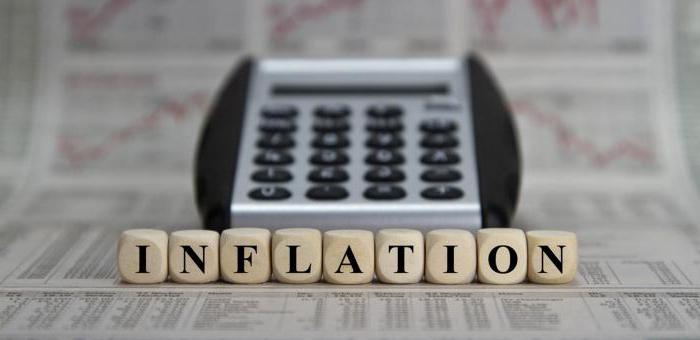
Thus, this phenomenon affects completely different aspects of society and the state. And this, in turn, requires constant study of the pace, forms and direction of inflation. Accelerated and unbalanced inflation has negative consequences in many cases. Depending on the speed of its development, determine the types of measurement of inflation.
Creeping inflation
With this inflation, there is an increase in prices within 10% per year. Measures of inflation are moderate. The price of money remains at the same level, trade contracts are drawn up at nominal prices.
Economic science considers such inflation to be the most optimal, since it occurs due to a constant change in the product mix, and it makes it possible to naturally regulate prices in the face of changing supply and demand. This inflation is controlled since it can be regulated.
Galloping inflation
With this type of inflation, price changes occur in the range from 10 to 200% per year. Measuring inflation makes consumers anxious. In trade agreements, they begin to consider the increase in prices, people begin to transfer their funds to material resources. This inflation is heavily regulated, often financial reforms are underway. Such transformations speak of a diseased economy moving towards stagnation, and even to a serious economic crisis.
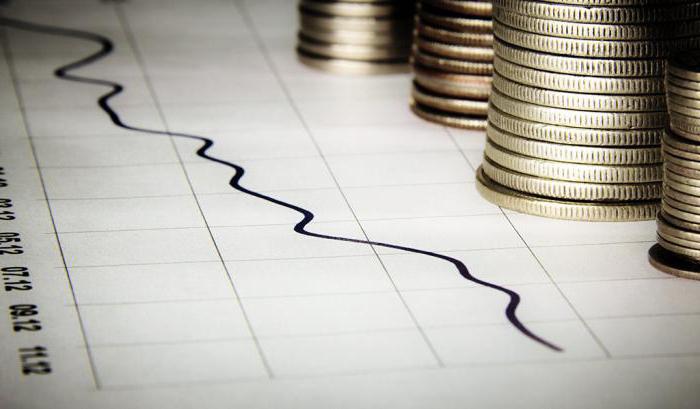
Hyperinflation
In this case, the economy is moving towards a period in which price increases go over the level of 50% per month. The annual rate exceeds 100%. Financial well-being, even of wealthy groups, is collapsing, and comprehensive economic relations are falling apart. Hyperinflation is an unregulated process that calls on the state to take emergency measures. As a result of hyperinflation, the real economy and trade freeze, the real weight of the national economy falls, and other negative processes intensify.
Hyperinflation is the collapse of the financial system, the paralysis of the entire monetary mechanism. One of the most significant was the level of hyperinflation in Hungary in the period after the Second World War, when the value of the depreciation of funds for the month grew hundreds of times.
Materialization of finance
Disproportionate inflation may result in increased rates of financial materialization. Both ordinary people and corporations are trying to materialize their rapidly losing value finances. Buyers are actively acquiring antique valuables, antiques, gold, equipment, etc.
Companies are planning actions to enhance the consumption of finance. A poorly weighted, hasty and excessive rate of increase in material reserves for the future is stimulated.The deficit increases simultaneously with the “overstocking” of warehouses of campaigns and organizations, ordinary consumers create no less excitement, who, in a fit of panic, sweep everything away from store shelves.
Implicit tax increases
Another bad result of rapid inflation – secret state withdrawal of finances through taxes. As inflation continues to increase, a progressive increase in duties automatically makes any form of business and population increasingly rich or profitable. It does not take into account, really or only nominally, there is an increase in their profits. This enables the state to demand ever larger funds in the form of taxes without spreading regular tax rules and rates.

Redistribution of national income
It should be noted that national income is generated from various sources. They can be defined as constant (income is allocated over a specified period of time) and variables (income is correlated depending on the work of the economic intermediary). It is seen that the effect of inflation will be most significant for workers with fixed contributions, since their real ability to purchase goods and services is declining. People who live on non-fixed financial sources of funds can benefit from inflation if their nominal income rises faster than prices increase (i.e., their real income rises).
Owners of savings may also be in the negative side of inflation if the interest rate on the deposit (deposits or investments in securities) is lower than the inflation rate.
Methods for measuring inflation
To account for economic development and study the real fall in the value of a financial unit, there are methods for measuring inflation. There are several of them, and they are based on different approaches and developments of scientific schools:
- Measurement using price level. This method of measuring inflation is as follows. The gross domestic product price level of the economy of the whole country, personal consumer prices and personal wholesale prices are applied. To calculate the level, the total cost of a conditioned set of goods and services is compared, this indicator is indicated as a percentage.
- Determining the power of inflationary processes. The method involves calculating the course of inflation for certain periods of time (periods can be completely different, depending on the tasks, from days to centuries).
- Counting according to the rule of volume 70. The rule makes it possible in a short time to measure the number of years needed to double the price: you just need to divide the number 70 by the rate of annual increase in the price in percent.
Methodology for finding the inflation index
How is inflation measured? The indices used to verify inflation actually show large consumer surveys to produce relevant statistics. Regularly, the central service of state statistics of the Russian Federation gets in touch with a large number of large retail chains, service distributors, rental agencies, private hospital services, etc. to obtain data on prices for certain products and services that are in the consumer basket. Specialists constantly determine and seek prices for 80,000 goods and services.
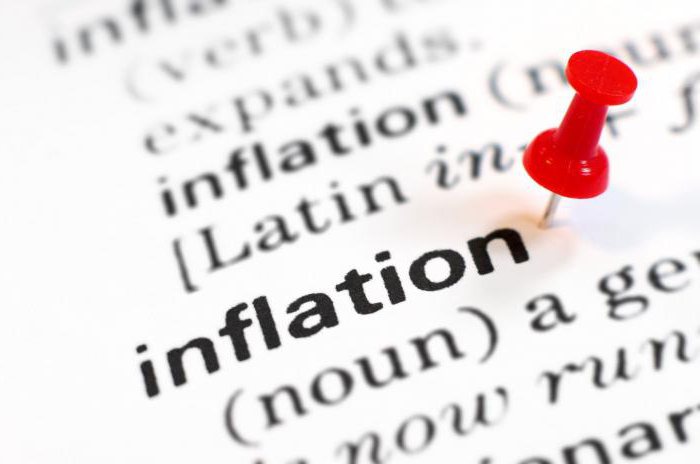
Work difficulties
Determining inflation measurement indices is usually a difficult task for specialists. It is necessary to assemble a “consumer basket” of those types of food and non-food products that will become necessary to ensure a normal standard of living. Then the amount of funds for such a consumer basket is viewed within the set time. The result of the study will be inflation measurement indices, that is, the price of the consumer basket today, shown as a percentage of the indicated time frame for index search.
Consumer price index
In our country, as in the developed countries of Europe and America, two leading indexes are used to determine inflation: the consumer price index and the producer price index.
Consumer price index - the difference in the cost of products and services, in particular, we can talk about bread, meat, vegetables and other necessary products. The consumer price index shows a modification of prices from the standpoint of buyers.
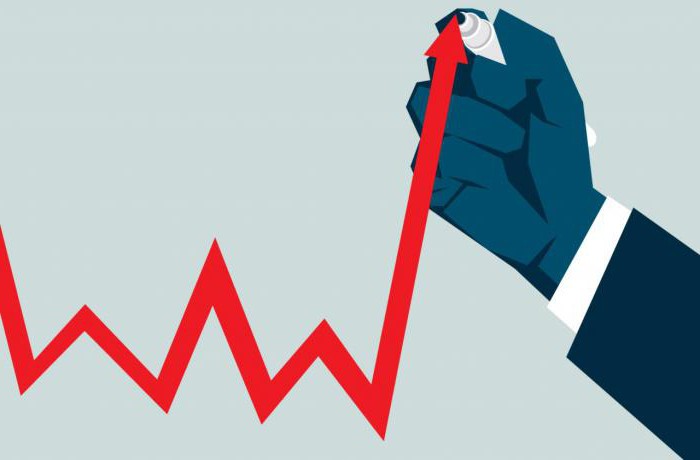
Producer price indices
The second dimension of inflation - the producer price index - any indicators of the usual changes in the prices of sales of products and services from producers within the state. Producer price indices provide statistics on price changes from the perspective of producers / distributors.